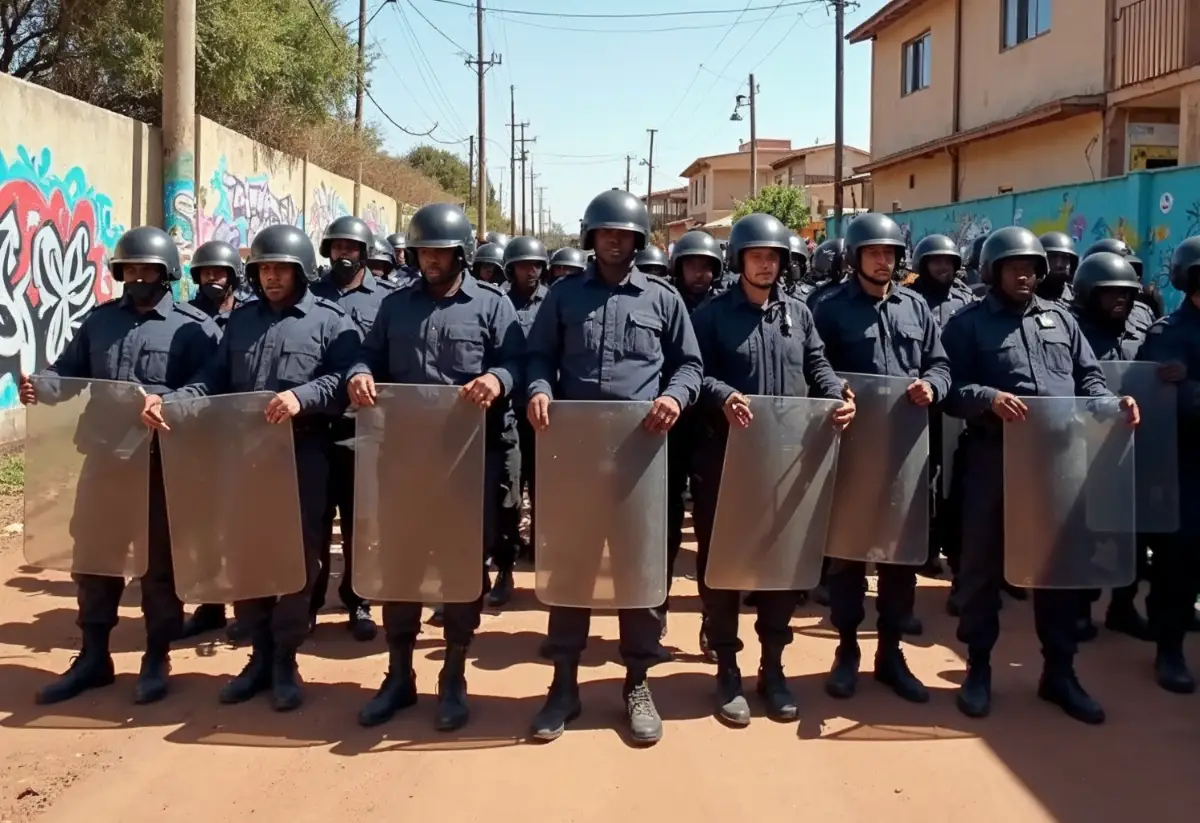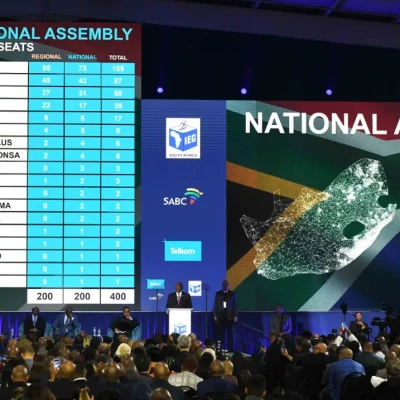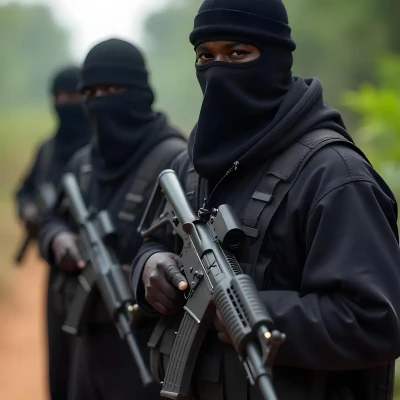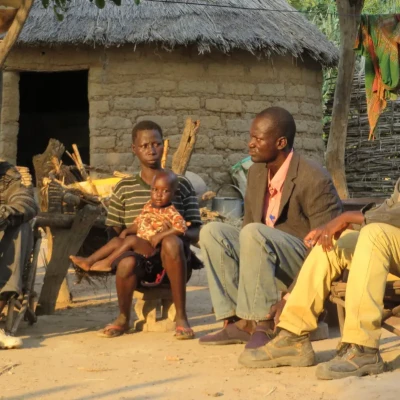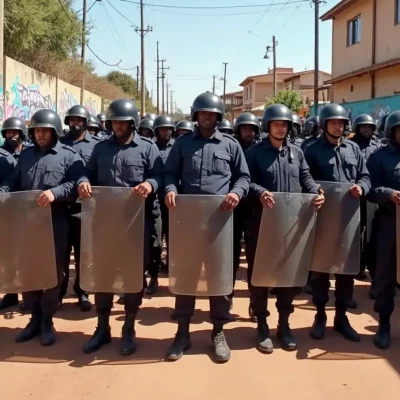For most observers of the socio-political affairs of Eswatini (formerly Swaziland), the events of 29 June 2021 and those of earlier weeks leading up to them, presented a level of violence that the country has not experienced since independence. Indeed, it could be argued that the violence was unparalleled in the country’s modern history. Given the significance of this event, this article seeks to contextualise the conflict and examine whether the government has effectively dealt with the grievances of the protesters. It will argue that the disturbances of June 2021 were unique because they were largely non-partisan, led by groups of young people who wished to put police brutality to an end in the country. The article will also argue that whereas past protests usually took place in the main cities of the country, this time, they were spread throughout rural and urban communities, signalling a shift in the frustration locus.
In elaborating on these two interconnected theses presented above, the article will proceed as follows: it will offer a concise narration of the events preceding the violence of 29 June 2021 that was centred on the death of the University of Swaziland law student Thabani Nkomonye. Thereafter, it will consider the call for an elected prime minister (PM) that came out of the protests, highlighting that these protesters were largely unaffiliated with the major political parties in the country, whose clarion call is multi-party democracy. The conclusion that will be drawn is that the authorities failed to respond to the initial concerns of the people due to the closed nature of the political system of the country and its ineffective citizen participation structures. The authorities thus chose a similar zero-sum approach after the conflict. The unfortunate consequence of this is that the country is likely to witness similar outbursts unless it deals with the root cause of the problem.
The Thabani Nkomonye saga
The death of Thabani Nkomonye in a car accident1Chutel, Lynsey (2021) ‘Who was the man at the centre of eSwatini’s alleged police brutality case?’ News24, 9 June, Available at: https://www.news24.com/news24/who-was-the-man-at-the-centre-of-eswatinis-alleged-police-brutality-case-20210609 [Date Accessed: 03 August 2024]. on one of the country’s narrow and twisty public roads may have been attributed to another unfortunate car wreck had it not been for the subsequent discovery that the police allegedly tampered with the crash site. It was reported in the local news that the police allegedly could not locate Nkomonye’s body when they arrived at the scene. When the body was found, all indications were that it had not sustained any wounds consistent with a car crash. It was found six days later, about 25 kilometres from the point of the accident. The question on the minds of everyone was: What really happened?
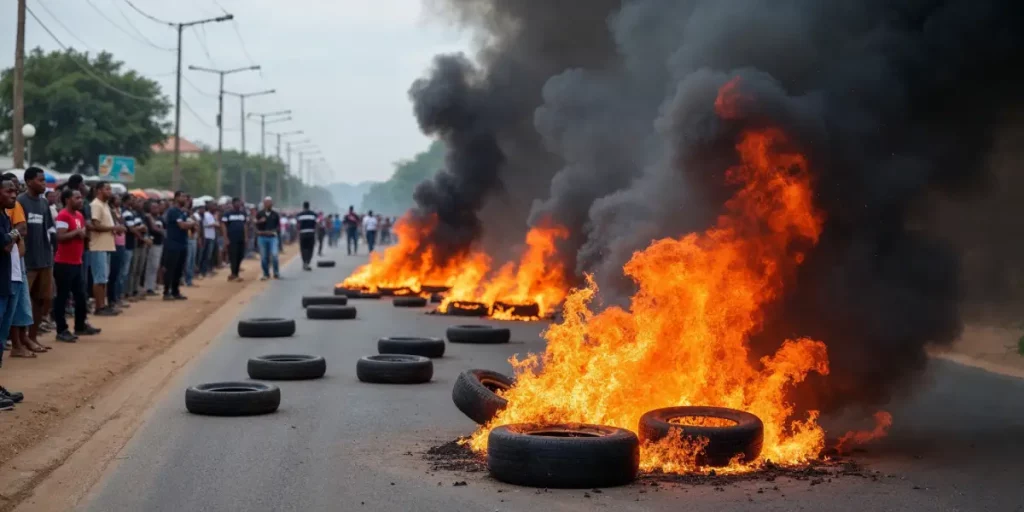
It is the mystery and apparent obfuscation by authorities that led to the famous #JusticeforThabani protest on social media platforms. The supporting posts came from people of all backgrounds, but mainly the youth, who expressed their horror at the impunity and corruption of the police force. The Catholic Commission for Justice and Peace released a press statement calling for the case to be given immediate attention by the authorities and for the culprits to be held accountable.2Kahiu, Magdalene (2021) ‘Catholic Entity in Swaziland “outraged” by Alleged Police Killing of University Student’, ACI Africa, 25 May, Available at: https://www.aciafrica.org/index.php/news/3539/catholic-entity-in-swaziland-outraged-by-alleged-police-killing-of-university-student [Date Accessed: 03 August 2024]. This affair, in the author’s view, acted as a proximate cause of the violence that was to occur in the country several weeks later. The march organised by the Swaziland National Union of Students (an affiliation comprising students from various tertiary institutions in the country) was joined by members of political parties and trade unions, and it turned violent.
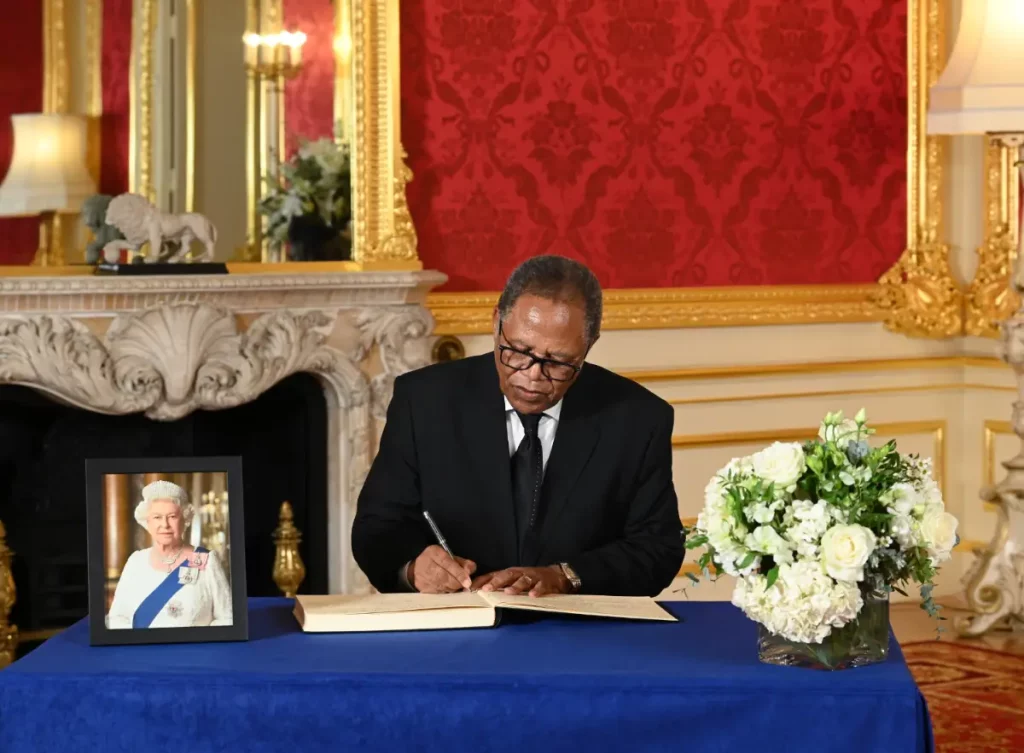
In Eswatini, what would ordinarily have been a case of police impunity tout court metamorphosed into a wider call for democratic reform in the country. Some hold that in authoritarian states, it is the authorities that usually encourage the impunity of security officers, as they are deployed to protect the status quo.3Schatz, Edward (2009) ‘The Soft Authoritarian Tool Kit: Agenda-Setting Power in Kazakhstan and Kyrgyzstan’, Comparative Politics, 44(4), 485–504. Therefore, the amount of violence that the security cluster uses is a consequence of the leeway authorities give them. This, in turn, creates a lack of accountability and transparency with the public.
The online posts and the protests were the first indication of a cross-sectional and overtly disgruntled public. Furthermore, while the subsequent inquest into the death of Thabani Nkomonye played a major role in quelling public anger, we know today that it was not to last. Enter the call for the election of the PM, which is analysed in the next section.
Call for the election of the PM
The call by a section of members of parliament (MPs) for a constitutional amendment to allow for the election of the PM4Mdluli, Mbono (2021) ‘MPs working on motion for elected govt’, Eswatini Observer, 21 July, Available at: http://new.observer.org.sz/details.php?id=16485 [Date Accessed: 03 August 2024]. was characteristically met with silence and indignation by their counterparts in the House of Assembly. To support this change would have been tantamount to the politicians biting the hand that feeds them. Even if other MPs were sympathetic to the cause for reform, the constitutional requirement of a two-thirds majority vote in a joint sitting of both MPs and senators rendered this rather radical motion dead in the water.
This motion and the manner in which Parliament engaged with it touched a nerve that many politicians were unaware existed in the country in relation to incremental democratic reform. Young people in different constituencies (notably in those which the reform MPs came from) started marching to tinkhundla [constituency centres] to deliver petitions demanding, among other things, improved service delivery and that the office of the PM be occupied by an elected official as opposed to one appointed by the monarchy.
This spontaneous surge in petition delivery was unique due to its non-partisanship and rural-based nature. The major political parties were not at the forefront. The protesters’ position in favour of an elected official is deemed by many political parties as, at best, incremental and conservative and, at worst, a betrayal of ‘true’ democratic reform. The position of political parties vis-à-vis democratic reform often runs along the lines of unconditional unbanning of political parties, the return of political prisoners, and the holding of multi-party elections. Therefore, we can confidently argue that they were not the leaders of the protests of 2021. Nevertheless, some prominent political leaders did support the protests as a way of either showing their awareness of the country’s political developments or using them as momentum to promote their own ideas.
Government reaction and implications
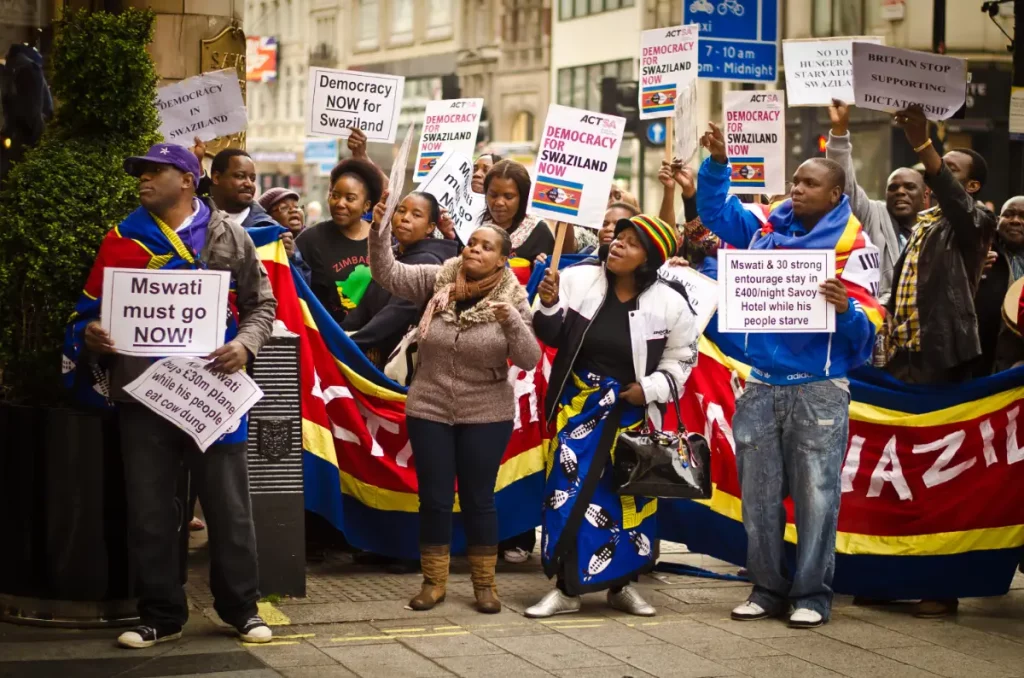
At the beginning, the government undoubtedly banked on its time-tested strategy – doing nothing. After all, spontaneous social movements lose momentum over time due to a lack of coordination, leadership, and the difficulties associated with effective collective action.55 However, the problems of collective efforts seem to have been bridged by social media because demands for change continued to manifest around the country, especially in rural areas. The protests not only continued but spread throughout the country. It was only then that the government decided to act. They opted for a tactic completely unsuited to the prevailing context – suppression.
The acting PM, Themba Masuku, issued a decree banning the delivery of petitions,6Tilly, Charles; Castañeda, Ernesto; and Wood, Lesley J. (2020) Social Movements, 1768–2018,New York: Routledge. closing the only outlet for the frustration of concerned citizens. This set the stage for a confrontation between the security forces and the protesters who ignored PM Masuku’s decree. Thus, the country precipitated into one of the most chaotic episodes recorded in its modern history. Unlike the violence of the past, such as that of the teachers’ strike in the mid-1990s, which was centred around the major cities of Mbabane and Manzini, this time, violence was present in different tinkhundla, where buildings were gutted by unidentified arsonists. Homes of those who were considered close to the government met a similar fate. In the cities, clashes between the security cluster led to the loss of lives and property, as recorded in daily newspapers. The question of who the arsonists were – the protesters or mercenaries hired to foment the chaos – though important, largely misses the point: namely, that the government mishandled the crisis from the beginning.
Side-stepping the issue of how a constitutional amendment can be effected, it is clear that the government misread the signs in the country. The discontent had been festering for a while, and when it erupted, government tactics could scarcely cope with the changed socio-political circumstances. Indeed, two years later, the authorities are unwilling to deal with the political violence that has become normal in the country. The rejection of the constitutionally mandated Sibaya, or people’s parliament, as the locus for dialogue by some political and civil society groups has given the authorities grounds for stalling any meaningful engagement with the ‘other.’ Authorities are arguing that guns ought to be silenced before dialogue occurs, forgetting that lessons from political violence and civil war studies teach us that guns are set aside when the parties to the conflict perceive that the platform is fair and there is more to be gained from cooperation than conflict.7Motau, Phephile (2021) ‘Acting PM bans petitions rallies’, Eswatini Observer,25 June, Available at: http://new.observer.org.sz/details.php?id=16311 [Date Accessed: 03 August 2024]. Real and hard compromises have to be made in calls for ceasefires and the subsequent peace negotiations that follow them. At the time of writing, the authorities held the people’s parliament after the national elections of 2023 and have since declared that all underlying issues have been solved, in spite of the fact that the Multiparty Stakeholder Forum (MSF) representing progressives again refused to participate.
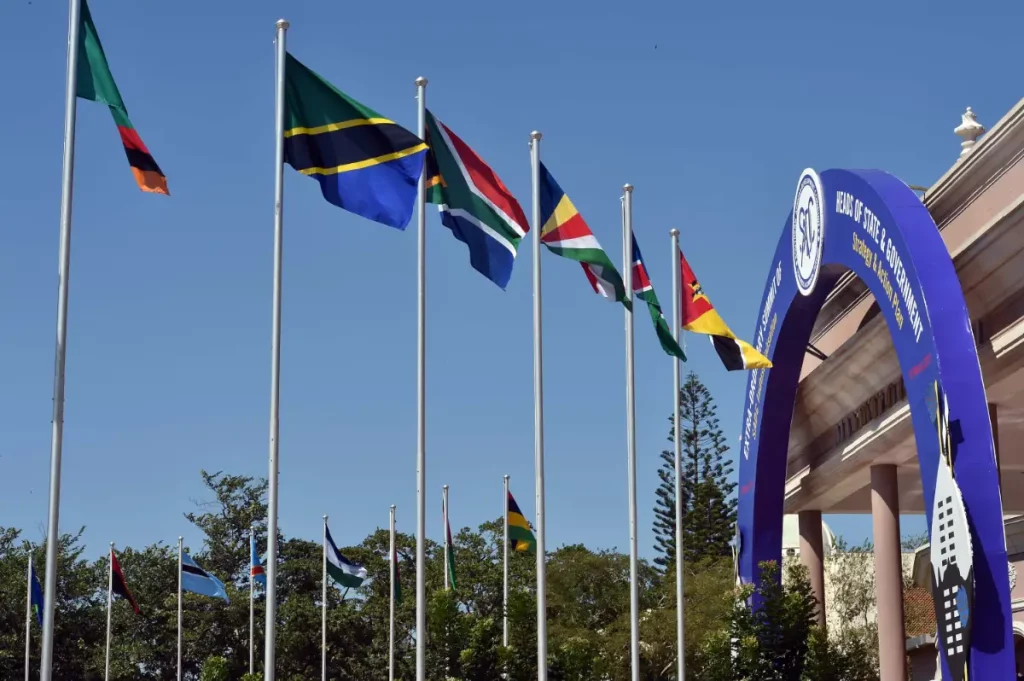
Political violence cannot be mitigated through military campaigns. If that were the case, some of the protracted conflicts in Africa, such as those in the eastern Democratic Republic of the Congo and the Horn of Africa, would have long been put to bed. The situation only improves when parties to the conflict choose ‘la table ronde’ instead of the bayonet. One might ask oneself whether a blanket rejection of talking to groups on the opposite side of the political spectrum is useful. While it may be true that there are some groups who prefer violence to dialogue, one can always engage those with cooler tempers in order to steer the country in the right direction. This can have a positive effect in curbing violence since spoilers are isolated when a critical mass of people engages in dialogue or peace negotiations.
Unfortunately, from the authorities’ point of view, such a course of action would be equal to an admission of guilt that all is not well in the Kingdom. The reset button would have gladly been pressed by the authorities. Alas, it does not exist. The country is on a descent into chaos, and it is the ruling authorities who can play the greatest role in saving it.
Political will
A change in mindset is required to find a creative solution for the problem we are currently confronted with. That is where Eswatini currently stands. There is a need to find new ways of addressing old problems that manifest themselves differently with the passing of time. This recurrent problem revolves around designing effective citizen representative structures. Over the years, the government has designed representative structures that protect their interests as opposed to those of the people. Political parties continue to be banned in spite of the promulgation of a new Constitution in 2005, and some are proscribed under the Suppression of Terrorism Act of 2008.
Given the prevailing circumstances, it is probable that the authorities will continue to attempt to ‘out-wait’ the problem of violence stemming from ineffective citizen participation. The prime reason for this is that Eswatini’s political structures have been carefully calibrated to give citizens just enough space for participation, so long as this does not give them power to challenge the legitimacy of the regime effectively. This project has been afoot since King Sobhuza’s II decree of 1973.
Consequently, in the likely event that the country has another episode of cross-sectional mass demonstrations, the security cluster will likely adopt the same approach, and this will prove increasingly impractical, given the changed nature of the protests. One can easily contain demonstrators concentrated on a city street, but that is not true for demonstrations throughout the country, especially in rural areas.
Recommendations
Below are some practical solutions for dealing with the country’s episodes of violence. Firstly, there should be genuine dialogue mediated by international observers addressing the many questions that need answers in the country. If, after discussion, it is felt that there is a need for constitutional amendments to allow for change, this must be done in a spirit of compromise and consensus. It is important to emphasise that only an incremental approach can bring lasting change in the country. One scenario is that the discussions among the different groups must first deal with the low-hanging fruit. Each party would ask itself which positions it would be willing to concede upon without compromising its principles and dearly held views. Then, slowly but surely, the discussions would move to the tougher questions.
Secondly, the country, with the help of international observers, can conduct a referendum on the question of whether political parties should participate in Parliament and in local government. This is important because the government has consistently argued that political parties were rejected by the public during the consultations that preceded the writing of the current Constitution. As this claim is controversial, since no one has had access to the data on the consultations,8Maseko, Thulani (2008) ‘The drafting of the Constitution of Swaziland, 2005’, African Human Rights Law Journal, 8(2), 312–336. an independently monitored referendum would settle the question.
Lastly, a reform of the security sector is important for an end to violence in the country. Many episodes of police brutality go unchallenged in the country, especially brutality against political dissidents.9Xaba, Vusi (2010) ‘Swazi dies in police custody’, Sowetan Live, 7 May, Available at: https://www.sowetanlive.co.za/news/2010-05-07-swazi-dies-in-custody [Date Accessed: 03 August 2024]. This continues the cycle of distrust between the government and citizens, especially those in the progressive camp. Therefore, it is necessary for the police to be subject to scrutiny and monitoring by Parliament and other ombuds institutions to ensure that they are accountable to the public and not the in political powers, as is the case presently. The implementation of these and other recommendations is, of course, dependent on political will and they would go a long way in changing the current course that the country has taken.
Mr. M.S Mngomezulu is a political science lecturer at the University of Eswatini. He possesses an MA in International Relations from New York University. His work focuses on authoritarian regimes and their strategies for survival.

